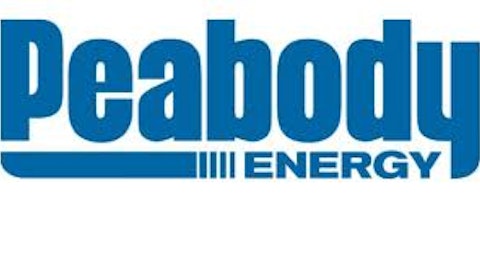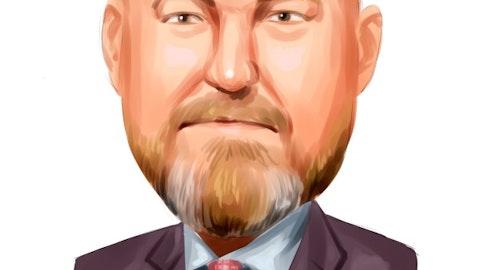Henrique Peretti: If I could humbly add something. I’d like to — could you publish the regulatory report and IFRS is not cash generated. So we have this volatility compared to the inflation. So it’s not good for us to understand the EBITDA of the company. So if you could publish that, it would help us in sell-side very much. I have two questions. The first one is about Furnas. Company had purchased about BRL 200 million, BRL 300 million. And now in the third quarter, it came to BRL 850 million in energy purchasing. And according to some comments, Santo Antonio would be BRL 230. So we have a gap of BRL 500 million as a gap in Furnas. Where did it come from? This recurrent, it’s — so I’d like to understand that better. What can we expect regarding energy purchasing for the next quarters.
And my second question is about Angra-3 and Electronuclear, and we know that you have a shareholders’ agreement with ENBPar for building the Angra-3. So what will you invest in that? What would be the cash flow when Angra-3 is concluded? Sorry about the long question.
Wilson Ferreira Jr.: Don’t worry. So we thank your request for the regulatory results statement report and we will be very transparent about that, and we will consider the suggestion. Thank you very much. So we’ll make that available. And regarding Angra 3, maybe Camila Gualdo, can answer that question since she’s the Governance Director. But some comments of Elvira and then we can give the word to Jatoba to talk about Furnas.
Elvira Baracuhy Presta: Wilson, just a second. We do not publish the regulatory statement, but we have an adjustment if we have adjusted the EBITDA with the regulatory revenue. So in Page #24, you can get this readjustment of the transmission revenue by the regulatory. Now regarding Andra, Camila.
Camila Gualdo Araújo: I ask you kindly to repeat the question of Andra 3.
Henrique Peretti: My question is if Eletrobrás will need to — as a major shareholder of Electronuclear, if you would need to invest proportionally for the conclusion of Andra 3, since Andra 3 was excluded. So the CapEx is not there anymore. But after the conclusion of this critical way and to resume — the resumption of the building of the plant, if Eletrobrás will invest prepay and how would it affect the cash flow of the company.
Camila Gualdo Araújo: In reality, our investment proportion are limited to the results of the studies of BNDES that are being concluded as we speak. So it depends on the conclusion. The tariff studies that will be approved by CNPE. Once this is concluded, we have the CapEx defined, and how can I say a financing strategy and participation by Electronuclear by capturing this financing and funding to conclude the building that they works, the building of Andra 3. What we needed to invest, we had invested before. And now we just monitor as a shareholder of the company, all the movements of Electronuclear seeking for financing and funding. So we are waiting for BNDES to deliver these studies, to check how it’s going to be structured for the next years.
Elvira Baracuhy Presta: Thank you, Henrique. What Camila has just said, what was agreed is that our responsibility is defined by the participation of the voting — of the voting capital, not the total capital stock. But the tariff as defined by law. It must be sufficient to pay this CapEx and to pay for the investments that you reminded us that was the critical way. All the investments that we have made from 2020 on, they must be paid. So we are waiting for the BNDES studies for the CNPE to approve the tariffs, that will cover the CapEx, that will be defined. And our responsibility from now on is limited to our participation in the voting capital.
Wilson Ferreira Jr.: Just to be clear, Elvira, it’s not predicted at first that we need to invest more capital beyond the critical way investments, right? The second is the tariff that will be approved by CNPE after the studies of BNDES. There will be a guarantee for the investments for the conclusion of those commissioning or this commissioning. , ENBPar, we offer collateral for those financing proportional to the voting capital. So Eletrobrás is limited in 35% of the voting capital. So after this explanation, I give the floor to Jatoba to talk a little about Furnas.
Pedro de Oliveira Jatobá: Thank you Henrique for the question. This is the seasonality strategy of the company. It’s important to remember that Furnas organized an auction for incentive energy that will be in force from 2024 on, and it will accommodate their clients’ portfolio. And obviously, now that the commercialization process will be unified. We will review that strategy to limit the purchases under what’s predicted. It was what was scheduled.
Wilson Ferreira Jr.: Just a final comment, if I may. Theoretically, Furnas would not need to purchase energy anymore because it’s going to reduce investments due to the exit of the Cotas system. The purchase of — what Furnas had, it was incentive energy. So it was the PPA in which sales to the consumer. So they went after that to make the projects viable to issue the PPAs. So we have a longer contract for the purchase of incentive energy that will meet the sale to the final consumer of incentive energy or subside energy.
Operator: Our next question comes from Marcelo Sa, sell-side analyst of Itau.





